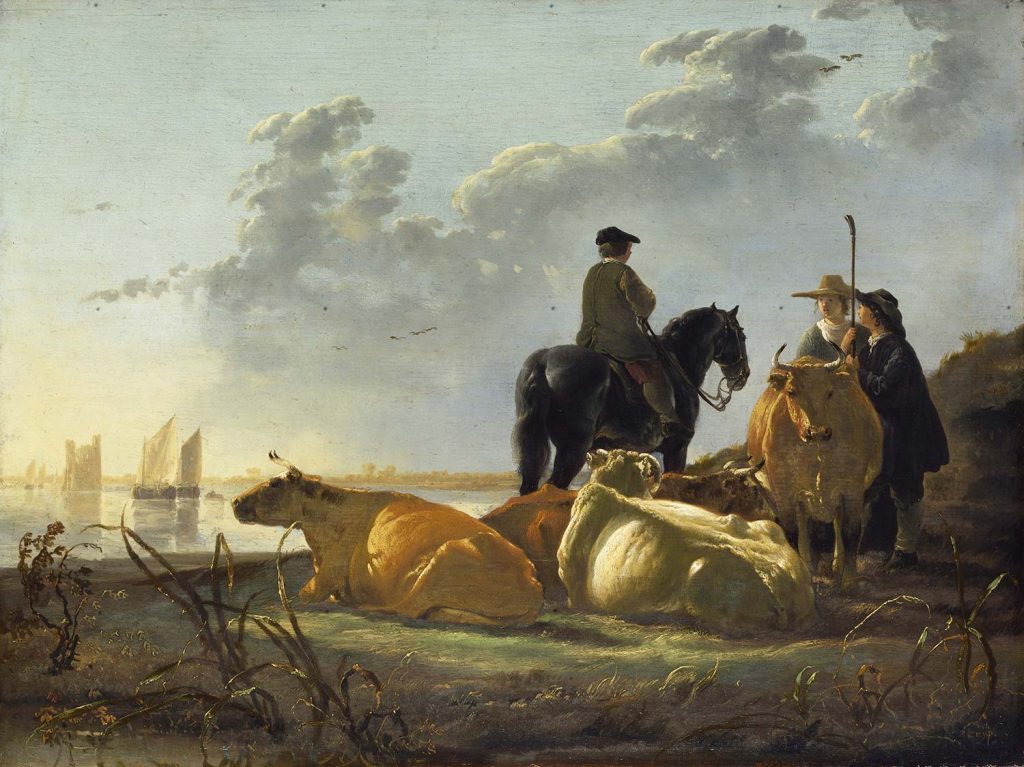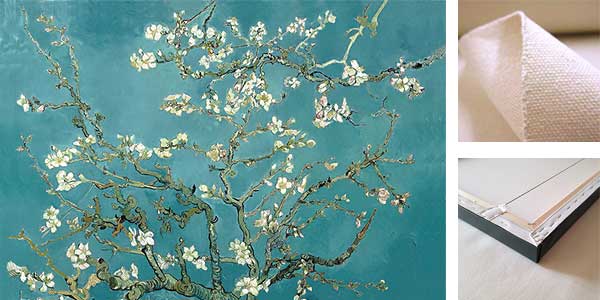
Peasants and Cattle by the River Merwede by Aelbert Cuyp was created in 1658 – 1660. The painting is in National Gallery, London. The size of the work is 38,1 x 50,8 cm and is made of oil on wood.
About the Work
It is the animals which take centre stage in this picture. On a grassy riverside knoll, four cows and a magnificent jet black horse are spotlit by the warm afternoon sun. Aelbert Cuyp was a brilliant painter of these beasts, especially cattle. He knew exactly how to convey their languor and ponderous bearing, how the light would catch their heavy, rippling hides and the tufted fringes on the powerful ridgeline of their backs.
Being ponderous animals, cows do not strike many poses. You can paint them lowering their heads to graze or lifting their heads to low. You can depict them lying down, standing up, turning their heads; side on, head on, from behind. But that’s about it. So Cuyp worked by perfecting a series of these postures and often repeated them in his paintings. Indeed some of these cows appear in other pictures in our collection – the one on the far left and the cow standing and viewed head on both appear in A Distant View of Dordrecht, with a Milkmaid and Four Cows, and Other Figures (‘The Large Dort’), for example.
There are several reasons why cows feature so prominently in Cuyp’s pictures. The seventeenth century had seen increasing reclamation of flooded land, especially around Dordrecht, Cuyp’s home town. The distant castle here, outlined in the golden haze on the far side of the river to the left, is the ruined castle of Merwede, about a mile to the east of Dordrecht. It dates from the thirteenth century and a part of one of the walls still stands today. Read more in National Gallery London
About the Artist
Aelbert Jacobszoon Cuyp or Cuijp (20 October 1620 – 15 November 1691) was one of the leading Dutch Golden Age painters, producing mainly landscapes. The most famous of a family of painters, the pupil of his father, Jacob Gerritszoon Cuyp (1594–1651/52), he is especially known for his large views of Dutch riverside scenes in a golden early morning or late afternoon light. He was born and died in Dordrecht.
Known as the Dutch equivalent of Claude Lorrain, he inherited a considerable fortune. His family were all artists, with his uncle Benjamin and grandfather Gerrit being stained glass cartoon designers. Jacob Gerritszoon Cuyp, his father, was a portraitist. Cuyp’s father was his first teacher and they collaborated on many paintings throughout his lifetime. Read more in Wikipedia
Order a reproduction of this work (printed on canvas)
